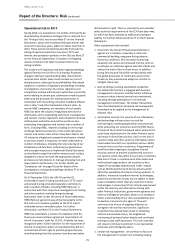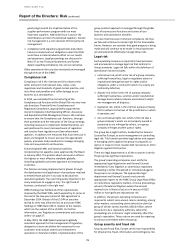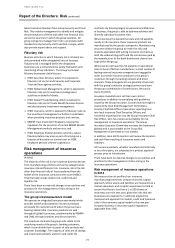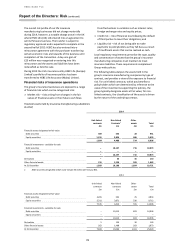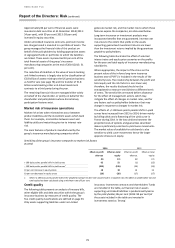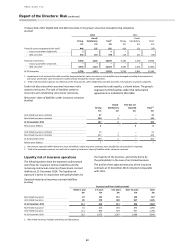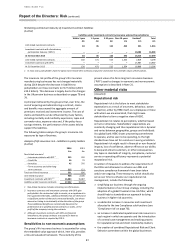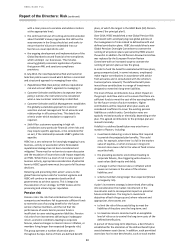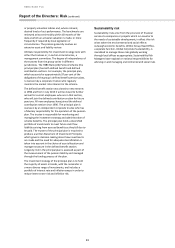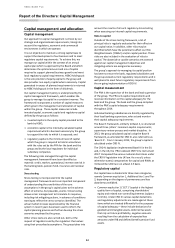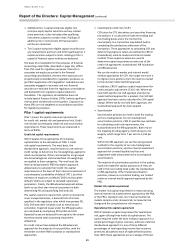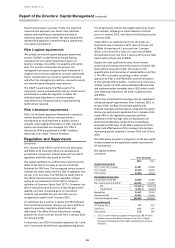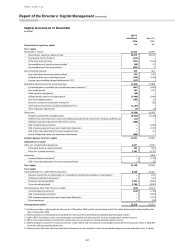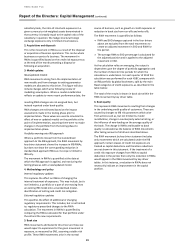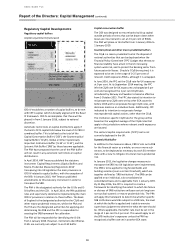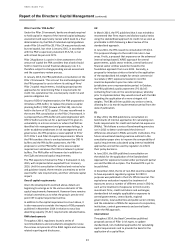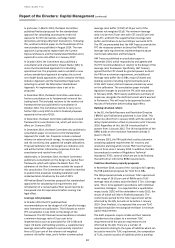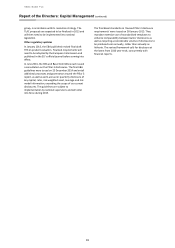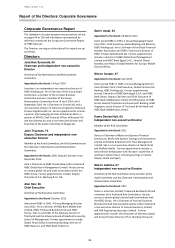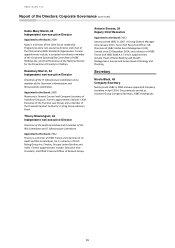HSBC 2014 Annual Report Download - page 87
Download and view the complete annual report
Please find page 87 of the 2014 HSBC annual report below. You can navigate through the pages in the report by either clicking on the pages listed below, or by using the keyword search tool below to find specific information within the annual report.
HSBC BANK PLC
Report of the Directors: Capital Management (continued)
85
• Additional tier 1 capital comprises eligible non-
common equity capital securities and any related
share premium; it also includes other qualifying
instruments subject to certain limits. Holdings of
additional tier 1 instruments of financial sector
entities are deducted.
• Tier 2 capital comprises eligible capital securities and
any related share premium and other qualifying tier 2
capital securities subject to limits. Holdings of tier 2
capital of financial sector entities are deducted.
The basis of consolidation for the purposes of financial
accounting under IFRSs, described on page 116, differs
from that used for regulatory purposes. Interests in
associates are equity accounted in the financial
accounting consolidation, whereas their exposures are
proportionally consolidated for regulatory purposes, as
per PRA’s application of EU legislation. Subsidiaries and
associates engaged in insurance and non-financial
activities are excluded from the regulatory consolidation
and deducted from regulatory capital subject to
thresholds. The regulatory consolidation does not
include Special Purpose Entities (‘SPEs’) where significant
risk has been transferred to third parties. Exposures to
these SPEs are risk-weighted as securitisation positions
for regulatory purposes.
Pillar 1 capital requirements
Pillar 1 covers the capital resources requirements
for credit risk, market risk and operational risk. Credit
risk includes counterparty credit risk and securitisation
requirements. These requirements are expressed in
terms of RWAs.
Credit risk capital requirements
CRD IV applies three approaches of increasing
sophistication to the calculation of Pillar 1 credit
risk capital requirements. The most basic, the
standardised approach, requires banks to use external
credit ratings to determine the risk weightings applied to
rated counterparties. Other counterparties are grouped
into broad categories and standardised risk weightings
are applied to these categories. The next level, the
internal ratings-based (‘IRB’) foundation approach,
allows banks to calculate their credit risk capital
requirements on the basis of their internal assessment of
a counterparty’s probability of default (‘PD’), but their
estimates of exposure at default (‘EAD’) and loss given
default (‘LGD’) are subject to standard supervisory
parameters. Finally, the IRB advanced approach allows
banks to use their own internal assessment in both
determining PD and quantifying EAD and LGD.
The capital resources requirement, which is intended to
cover unexpected losses, is derived from a formula
specified in the regulatory rules which incorporates PD,
LGD, EAD and other variables such as maturity and
correlation. Expected losses under the IRB approaches
are calculated by multiplying PD by EAD and LGD.
Expected losses are deducted from capital to the extent
that they exceed total accounting impairment
allowances.
For credit risk we have adopted the IRB advanced
approach for the majority of our portfolios, with the
remainder on either IRB foundation or standardised
approaches.
• Counterparty credit risk (‘CCR’)
CCR arises for OTC derivatives and securities financing
transactions. It is calculated in both the trading and
non-trading books and is the risk that the
counterparty to a transaction may default before
completing the satisfactory settlement of the
transaction. Three approaches to calculating CCR and
determining exposure values are defined by CRD IV:
standardised, mark-to-market and internal model
method. These exposure values are used to
determine capital requirements under one of the
credit risk approaches: standardised, IRB foundation
and IRB advanced.
We use the mark-to-market and internal model
method approaches for CCR. Our longer-term aim is
to migrate more positions from the mark-to-market
to the internal model method approach.
In addition, CRD IV applies a capital requirement for
credit valuation adjustment (‘CVA’) risk. Where we
have both specific risk VaR approval and internal
model method approval for a product, the CVA VaR
approach has been used to calculate the CVA capital
charge. Where we do not hold both approvals, the
standardised approach has been applied.
• Securitisation
Securitisation positions are held in both the trading
and non-trading books. For non-trading book
securitisation positions, CRD IV specifies two methods
for calculating credit risk requirements, the
standardised and the IRB approaches. Both rely on
the mapping of rating agency credit ratings to risk
weights, which range from 7 per cent to 1,250 per
cent.
Within the IRB approach, we use the ratings-based
method for the majority of our non-trading book
securitisation positions, and the internal assessment
approach for unrated liquidity facilities and
programme-wide enhancements for asset-backed
securitisations.
The majority of securitisation positions in the trading
book are treated for capital purposes as if they are
held in the non-trading book under the standardised
or IRB approaches. Other traded securitisation
positions, known as correlation trading, are treated
under an internal model approach approved by the
PRA.
Market risk capital requirement
The market risk capital requirement is measured using
internal market risk models where approved by the PRA,
or the PRA’s standard rules. Our internal market risk
models comprise VaR, stressed VaR, incremental risk
charge and the comprehensive risk measure.
Operational risk capital requirement
CRD IV includes a capital requirement for operational
risk, again utilising three levels of sophistication. The
capital required under the basic indicator approach is a
simple percentage of gross revenues, whereas under the
standardised approach it is one of three different
percentages of total operating income less insurance
premiums allocated to each of eight defined business
lines. Both these approaches use an average of the last


